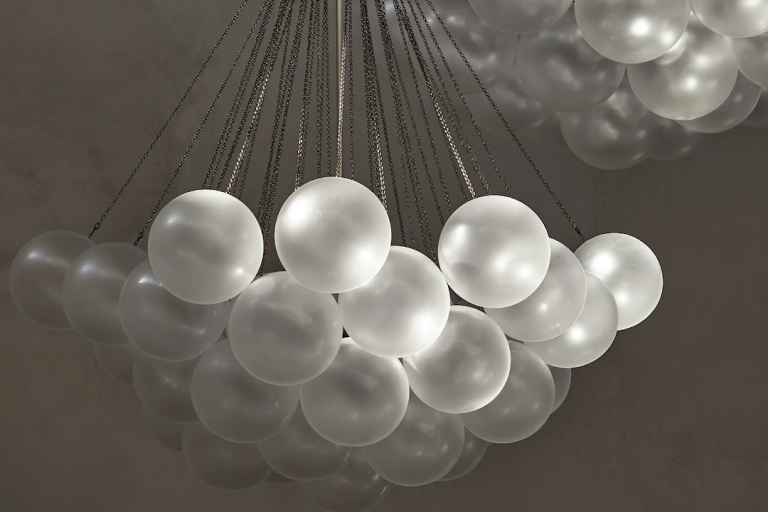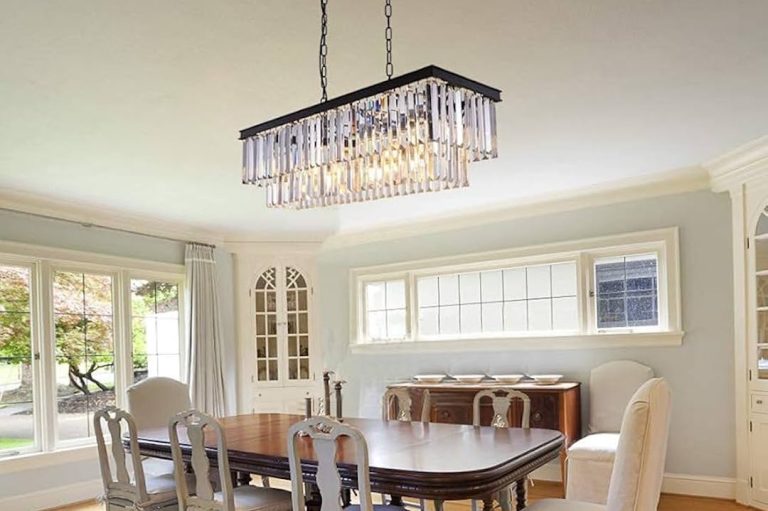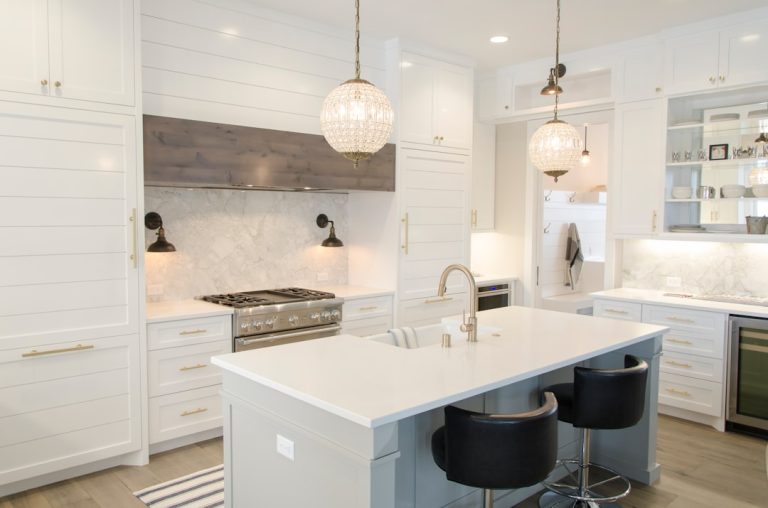The origins of palace-style chandeliers can be traced back to the grand palaces and opulent homes of Europe during the Renaissance period. Initially, these lighting fixtures were simple iron or wooden constructions adorned with candles, serving both functional and decorative purposes. As the demand for more elaborate designs grew, artisans began to experiment with materials such as glass and crystal, leading to the creation of the first true chandeliers.
The introduction of lead crystal in the 17th century marked a significant turning point; it allowed for greater clarity and brilliance, enhancing the visual impact of these magnificent fixtures. The chandeliers became synonymous with wealth and status, often found in the ballrooms and dining halls of nobility, where they illuminated lavish gatherings and celebrations. Throughout history, palace-style chandeliers have evolved into symbols of luxury and opulence.
In the 18th century, the Baroque and Rococo styles dominated European design, leading to chandeliers that were not only functional but also works of art. These pieces featured intricate designs, elaborate motifs, and an abundance of crystals that refracted light in mesmerizing ways. The Palace of Versailles in France is perhaps one of the most iconic examples, where grand chandeliers adorned the Hall of Mirrors, reflecting the grandeur of the French monarchy.
As these lighting fixtures became more prevalent in aristocratic homes, they also began to influence architectural styles, with ceilings being designed to accommodate their grandeur. The chandelier’s significance as a status symbol has persisted through the ages, making it a timeless representation of elegance and sophistication.
The Selection of High-Quality Crystal
The creation of palace-style carved crystal chandeliers is a meticulous process that requires both artistic vision and technical skill. Artisans begin with high-quality crystal, often sourced from renowned glasshouses known for their exceptional clarity and brilliance.
Cutting and Polishing the Crystal
The initial stages involve cutting the crystal into various shapes, such as prisms, drops, and beads, each contributing to the overall design. This cutting process is not merely functional; it is an art form that enhances the light-reflecting properties of the crystal. Each facet is carefully polished to ensure maximum sparkle, creating a dazzling effect when illuminated.
Intricate Designs and Assembly
Once the basic shapes are cut, artisans employ advanced techniques such as engraving and etching to add intricate designs to the surface of the crystal. This step requires a steady hand and an eye for detail, as even the slightest imperfection can detract from the overall beauty of the piece. The designs often draw inspiration from nature, featuring floral motifs or organic shapes that evoke a sense of elegance and grace. After the carving is complete, each piece is assembled into a cohesive chandelier structure, often incorporating additional materials like metal or wood to enhance its aesthetic appeal.
Palace-style carved crystal chandeliers have an enduring appeal that transcends fleeting design trends. Their ability to evoke a sense of grandeur makes them a coveted statement piece in various interior design schemes. Whether gracing a modern minimalist space or an opulent traditional setting, these chandeliers add an element of sophistication that few other decor items can match.
Their intricate designs and sparkling crystals create a focal point that draws the eye upward, enhancing the perceived height of a room while infusing it with light and warmth. The versatility of palace-style chandeliers allows them to adapt seamlessly to different design aesthetics. In contemporary settings, they can serve as striking contrasts against sleek lines and minimalist decor, adding a touch of drama and elegance.
Conversely, in more traditional interiors, they harmonize beautifully with ornate furnishings and rich textiles, reinforcing a sense of historical continuity. This adaptability ensures that palace-style chandeliers remain relevant across generations, appealing to those who appreciate both classic beauty and modern sensibilities.
The versatility of palace-style carved crystal chandeliers is one of their most appealing attributes. These magnificent fixtures can be integrated into a wide range of design styles, from classic to contemporary, making them suitable for various spaces within a home or commercial setting. In grand entryways or expansive dining rooms, they serve as breathtaking focal points that set the tone for elegance and sophistication.
Their ability to illuminate large areas while simultaneously enhancing architectural features makes them ideal for spaces where ambiance is paramount. In more intimate settings, such as bedrooms or cozy sitting areas, smaller versions of palace-style chandeliers can create an inviting atmosphere without overwhelming the space. These fixtures can be paired with softer color palettes and understated furnishings to achieve a balanced look that feels both luxurious and comfortable.
Additionally, their adaptability extends beyond residential spaces; many upscale restaurants, hotels, and event venues incorporate these chandeliers to elevate their interiors. By selecting designs that complement existing decor elements—such as color schemes or architectural details—interior designers can create cohesive environments that exude charm and sophistication.
A palace-style carved crystal chandelier has an unparalleled ability to transform a room into an extraordinary space. As a focal point, it commands attention and serves as a conversation starter for guests. The interplay of light refracted through its myriad crystals creates an enchanting atmosphere that captivates anyone who enters the room.
This visual spectacle not only enhances the aesthetic appeal but also elevates the overall ambiance by infusing it with warmth and elegance. The strategic placement of a chandelier can significantly influence how a room feels. For instance, positioning a grand chandelier above a dining table creates an intimate setting for gatherings while simultaneously making a bold design statement.
In living rooms or lounges, these fixtures can draw attention to architectural features such as high ceilings or ornate moldings, enhancing the overall grandeur of the space. Moreover, when paired with complementary decor elements—such as plush seating or rich textiles—the chandelier becomes an integral part of the room’s narrative, weaving together various design components into a harmonious whole.
Cleaning Methods
A soft microfiber cloth is ideal for gently wiping down each crystal piece without scratching its surface. For more thorough cleaning, especially if there are signs of tarnish or grime buildup, using a mixture of warm water and mild dish soap can effectively restore clarity.
Avoiding Damage
It’s crucial to avoid harsh chemicals or abrasive materials that could damage both the crystal and any metal components. In addition to regular cleaning, periodic inspections are necessary to ensure that all parts are secure and functioning properly.
Preserving Authenticity and Longevity
Checking for loose crystals or connections can prevent potential accidents or damage over time. If any components require replacement or repair, consulting with professionals who specialize in chandelier restoration is advisable to maintain authenticity and craftsmanship. Proper care not only enhances the chandelier’s aesthetic appeal but also extends its lifespan, allowing it to remain a stunning centerpiece for years to come.
Selecting the perfect palace-style carved crystal chandelier involves careful consideration of several factors to ensure it complements both the space and overall design vision. First and foremost is scale; understanding the dimensions of the room is crucial in choosing a chandelier that fits proportionately within the space. A grand chandelier may overwhelm a small room while appearing lost in an expansive area if too small.
Designers often recommend using guidelines such as hanging chandeliers approximately 30-36 inches above dining tables or 7-8 feet above floors in living areas for optimal visual impact. Another important consideration is style coherence; selecting a chandelier that aligns with existing decor elements enhances overall harmony within the space. For instance, if a room features modern furnishings with clean lines, opting for a contemporary interpretation of a palace-style chandelier—perhaps one with geometric shapes—can create an intriguing juxtaposition without clashing with other design elements.
Additionally, color plays a significant role; choosing crystals that reflect or complement existing color schemes can enhance visual cohesion while adding depth to the overall aesthetic.
As interior design continues to evolve, so too does the tradition of palace-style carved crystal chandeliers. Contemporary designers are reimagining these classic fixtures by incorporating innovative materials and modern aesthetics while still honoring their historical roots. For instance, some designers are experimenting with mixed materials—combining traditional crystal with metals like brass or matte black finishes—to create striking contrasts that resonate with modern sensibilities.
This fusion not only breathes new life into classic designs but also allows for greater versatility in various interior settings. Moreover, advancements in lighting technology have opened up new possibilities for chandelier design. LED lighting has become increasingly popular due to its energy efficiency and longevity; designers are now integrating these modern light sources into traditional chandelier frameworks without compromising their elegance or charm.
Additionally, customizable options are becoming more prevalent; consumers can now select specific crystal shapes or finishes tailored to their unique preferences and spaces. This evolution reflects an ongoing appreciation for craftsmanship while embracing contemporary trends—ensuring that palace-style carved crystal chandeliers remain relevant in today’s dynamic design landscape.







+ There are no comments
Add yours